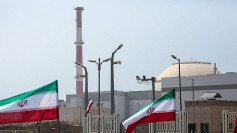Images of Typhoon Trami have emerged. Japan, however, is in its path, which could mean catastrophic damage to the island nation as it recovered from the effects of earlier storms.
Onboard the International Space Station (ISS), European astronaut Alexander Gerst took pictures of the typhoon's funneling clouds as well as the area of coverage. It looked horrific for the people on the ground. CNN quoted the astronaut as saying it appears "as if somebody pulled the planet's gigantic plug." Japan and Taiwan are believed to be right in the path of the typhoon.
The storm is technically no longer a "super typhoon." Its winds, however, still packs a punch at 195 kilometers per hour (121 mph.) The strength of the typhoon is still classified as a category 3 hurricane. With wind speeds like this, Japan and Taiwan are bracing for the arrival of the typhoon and the damage that the storm will cause.
Trami will affect the Ryukyu Islands in Japan. Aside from destructive gale-force winds, it will also bring rain and storm surge to the island, which also previously suffered a devastating storm surge from previous storms. As it was classified a Category 3 Hurricane, it is expected to create significant damage in the Japanese islands as well as massive flooding to flood-prone areas.
Accuweather reported that preparations were being made in the islands. However, "time is running out," according to Senior Meteorologist Kristina Pydynowski. Ryukyu, Kyushu, Okinawa, Shikoku, and Honshu are expected to bear the brunt of the storm. Roofs are expected to experience major damage, trees may be uprooted, and roads can be littered with debris caused by the strong winds.
On Sunday morning, the storm is expected to pass through the Japanese islands and it could head towards Amami, Okinawa, Osumi, and Okinawa. By then, the storm will have significantly weakened and will have winds of 160-225 km/h. Tokara and Osumi are also potentially placed in the path of the storm as it exits the Japanese islands.
Trami is the second strongest typhoon to hit the Asian continent, following Typhoon Mangkhut, which cut a destructive path from the Philippines, China, and Taiwan as well.





